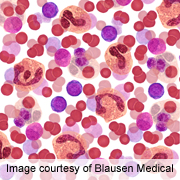
WEDNESDAY, Sept. 17, 2014 (HealthDay News) — Scientists have developed a blood-cleansing device, called the “biospleen,” that they say could potentially change the way the blood infection sepsis is treated.
Researchers at Harvard’s Wyss Institute for Biologically Inspired Engineering said their device works outside the body like a dialysis machine, and can quickly filter bacteria, fungi and toxins out of patients’ blood.
“Even with the best current treatments, sepsis patients are dying in intensive care units at least 30 percent of the time,” Mike Super, a senior staff scientist at the Wyss Institute, said in an institute news release. “We need a new approach.”
Sepsis, a life-threatening condition in which bacteria or fungi multiply in the blood, claims at least 8 million lives around the world each year. It’s also the leading cause of hospital deaths.
Sepsis is currently treated with antibiotics, but it often progresses too quickly for this approach to work. The increasing prevalence of drug-resistant bacteria makes treating sepsis more difficult.
The researchers modeled their design after the human spleen, which removes pathogens (germs) and dead cells from the blood through a series of tiny interwoven blood channels.
The biospleen they created consists of two adjoining hollow channels connected by a series of slits. While one channel contains flowing blood, the other has a saline solution that removes the germs that pass through the slits.
The biospleen was first tested with infected human blood in a lab before being tested on rats. In just hours the biospleen filtered live and dead germs and the deadly toxins they release, the researchers reported Sept. 14 in Nature Medicine. The device also increased the survival of the rats with sepsis, the researchers said.
The human blood was filtered at a rate of about half a liter to one liter per hour, the study authors noted in the news release.
The rats involved in the study were infected with E. coli and other bacteria and toxins that are similar to human bloodstream infections. The researchers found that roughly 90 percent of the bacteria and toxins were removed from the rats’ blood after five hours of filtering. While 90 percent of the treated rats survived, 14 percent of those in an untreated “control” group did not.
“We didn’t have to kill the pathogens. We just captured and removed them,” Super said in the news release.
Dr. Don Ingber, founding director of the Wyss Institute, said sepsis is a major medical threat, which is increasing because of antibiotic resistance. “We’re excited by the biospleen because it potentially provides a way to treat patients quickly without having to wait days to identify the source of infection, and it works equally well with antibiotic-resistant organisms,” Ingber said.
“We hope to move this towards human testing to advancing to large animal studies as quickly as possible,” he added.
More information
The U.S. Centers for Disease Control and Prevention has more about sepsis.
Copyright © 2025 HealthDay. All rights reserved.

